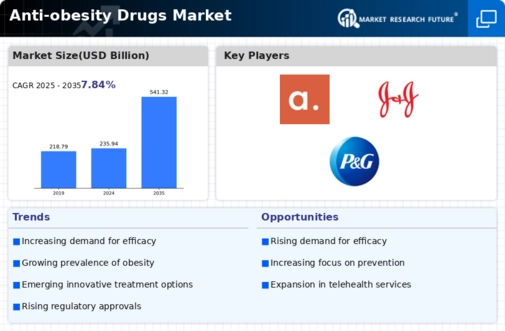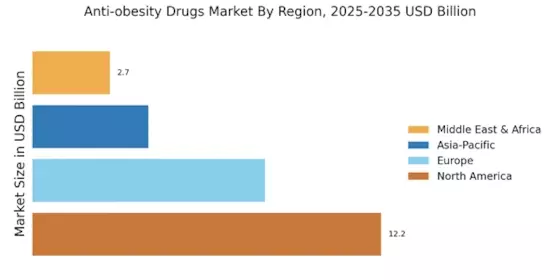Anti obesity Drugs Market Summary
As per MRFR analysis, the Anti-obesity Drugs Market Size was estimated at 27.16 USD Billion in 2024. The Anti-obesity Drugs industry is projected to grow from 34.17 USD Billion in 2025 to 339.76 USD Billion by 2035, exhibiting a compound annual growth rate (CAGR) of 25.82 during the forecast period 2025 - 2035.
Key Market Trends & Highlights
The Anti-obesity Drugs Market is experiencing dynamic growth driven by innovative therapies and increasing health awareness.
- The emergence of novel therapeutics is reshaping treatment options in the Anti-obesity Drugs Market.
- North America remains the largest market, while Asia-Pacific is recognized as the fastest-growing region in this sector.
- GLP-1 receptor agonists dominate the market, whereas appetite suppressants are witnessing the fastest growth.
- Rising obesity rates and increased awareness of health risks are key drivers propelling market expansion.
Market Size & Forecast
| 2024 Market Size | 27.16 (USD Billion) |
| 2035 Market Size | 339.76 (USD Billion) |
| CAGR (2025 - 2035) | 25.82% |
Major Players
Novo Nordisk (DK), Eli Lilly and Company (US), Pfizer Inc. (US), Boehringer Ingelheim (DE), Amgen Inc. (US), Sanofi (FR), Zafgen Inc. (US), Orexigen Therapeutics (US), GSK (GB)



















Leave a Comment